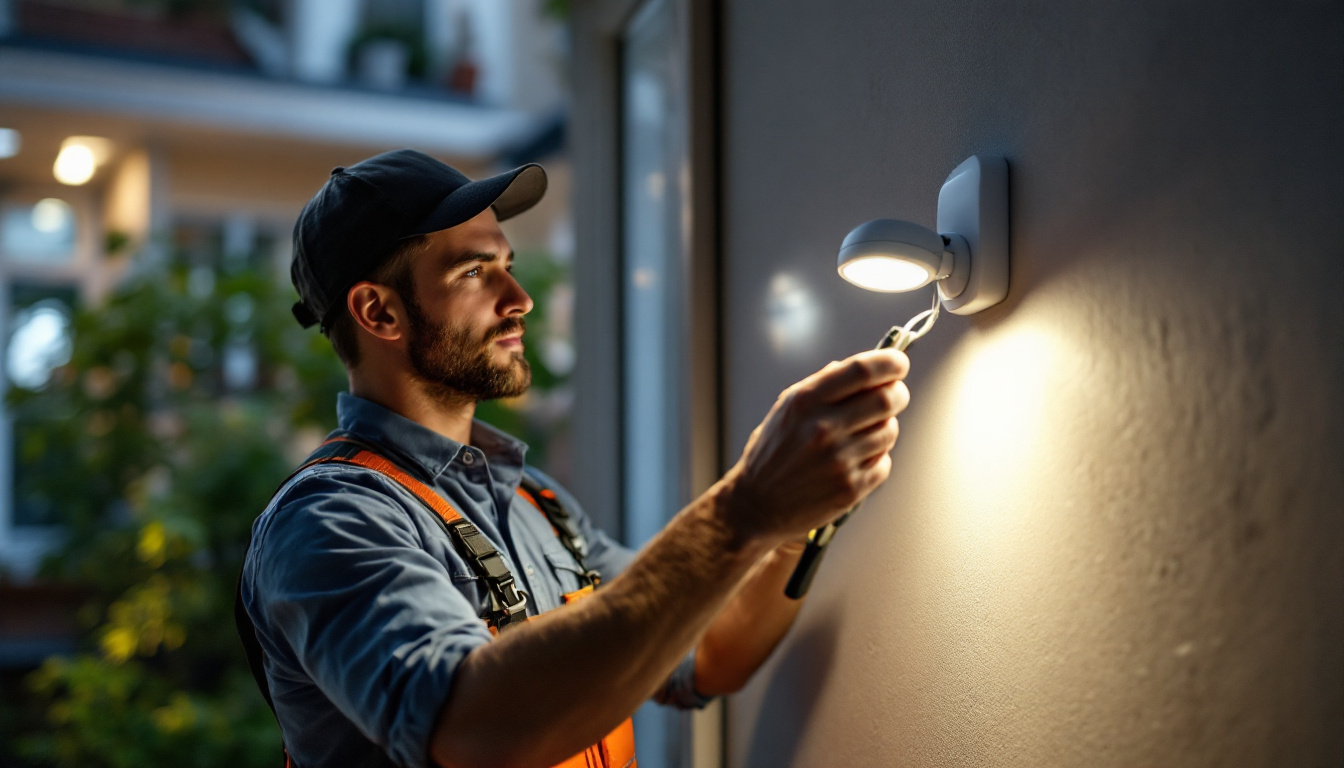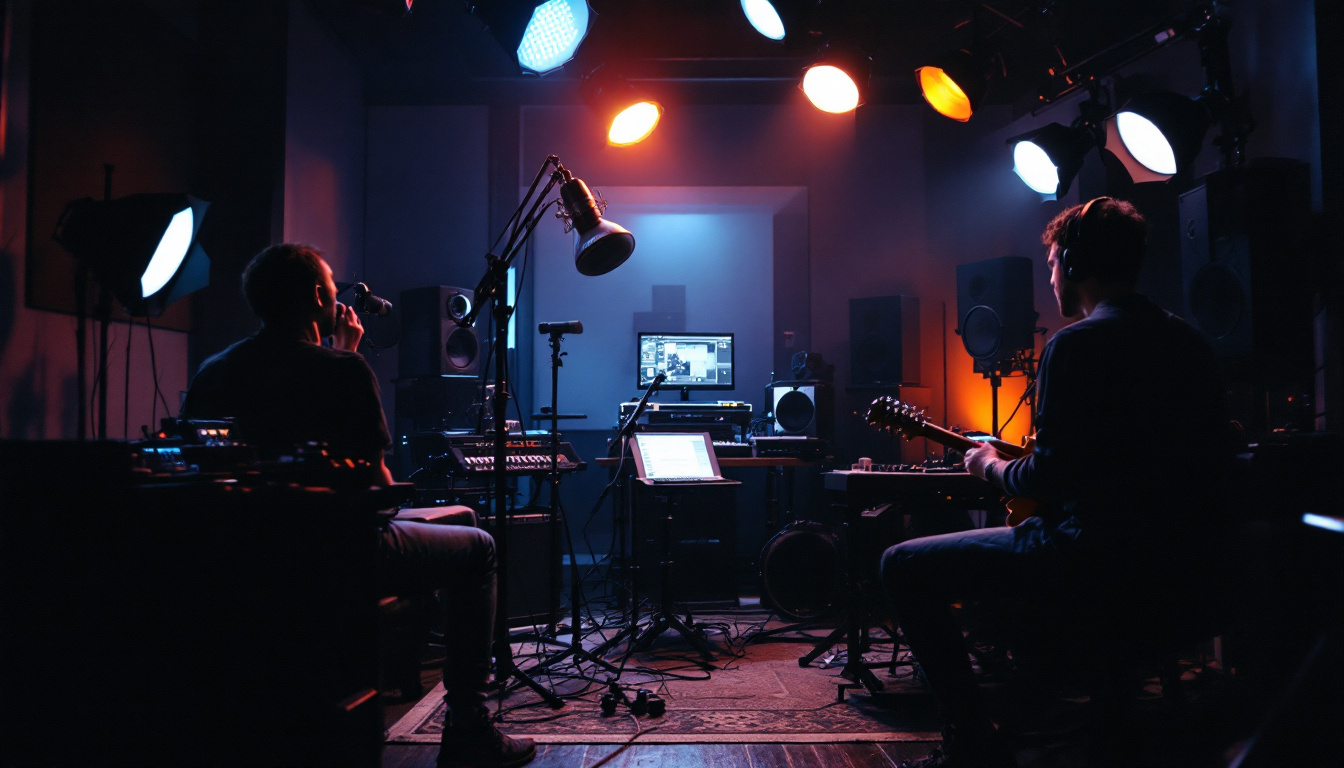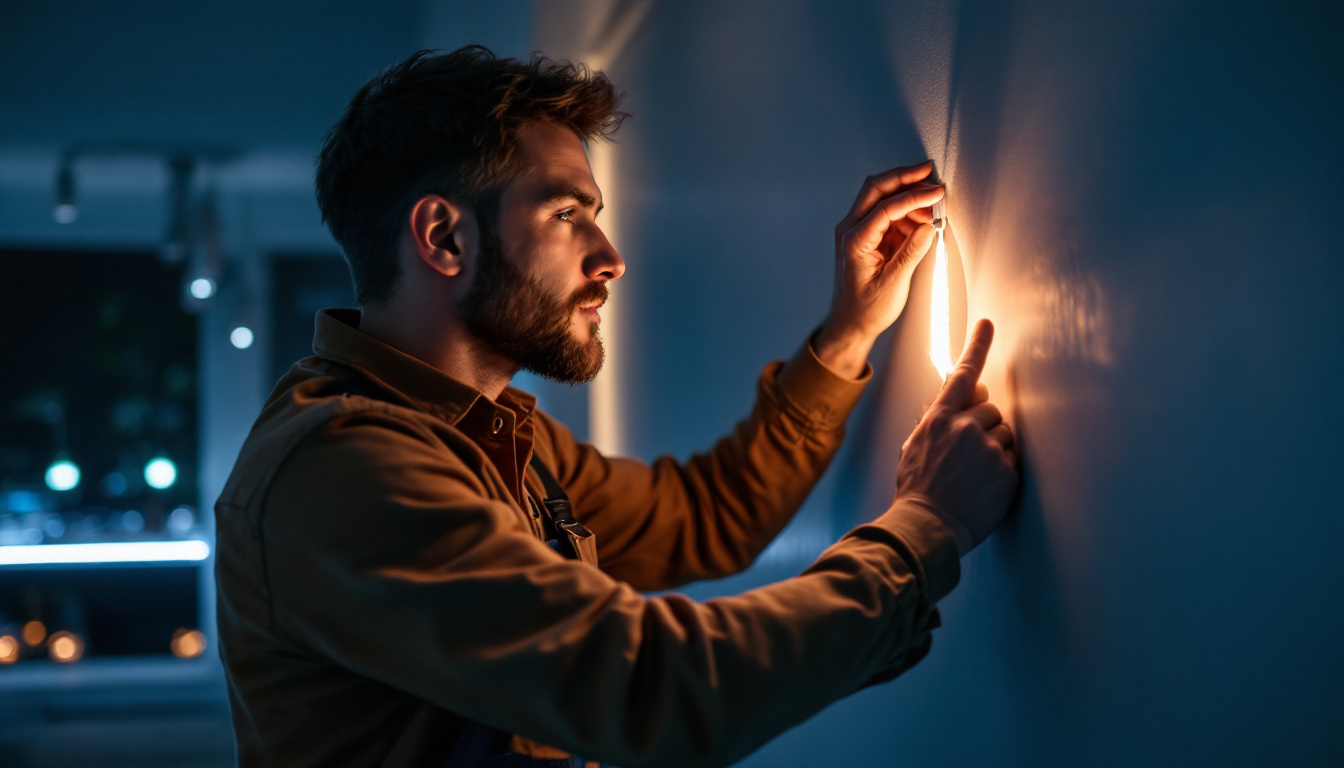
In the realm of commercial lighting, the choice of exterior light fixtures plays a pivotal role in enhancing the aesthetics, safety, and functionality of a property. For lighting contractors, understanding the nuances of selecting the right fixtures is essential for delivering optimal results to clients. This guide delves into the key considerations and options available when choosing commercial light fixtures for exterior applications.
Exterior lighting is not merely about visibility; it encompasses a broader spectrum of benefits that contribute to the overall ambiance and security of a commercial space. Properly designed lighting can enhance architectural features, create inviting environments, and deter criminal activity. The strategic placement of lights can transform an ordinary façade into a stunning visual experience, drawing attention and admiration from passersby.
Moreover, effective exterior lighting can significantly influence customer perceptions and behaviors. Well-lit spaces are more welcoming, encouraging foot traffic and enhancing the overall customer experience. As such, lighting contractors must prioritize the selection of fixtures that not only meet functional requirements but also align with the client’s branding and aesthetic goals. This alignment ensures that the lighting complements the overall design narrative of the space, reinforcing the brand’s identity and values.
One of the primary functions of exterior lighting is to ensure safety and security. Adequate illumination helps prevent accidents by highlighting pathways, entrances, and potential hazards. Additionally, well-lit areas deter criminal activity, making it crucial to choose fixtures that provide sufficient brightness without causing glare. The psychological impact of lighting cannot be underestimated; individuals are more likely to feel safe and secure in well-lit environments, which can lead to increased patronage and community engagement.
When selecting fixtures for safety and security, consider options such as floodlights, wall-mounted sconces, and bollard lights. These fixtures can be strategically placed to illuminate dark corners and enhance visibility in high-traffic areas. Furthermore, incorporating motion sensors and timers can add an extra layer of security, ensuring that lights activate when needed and conserve energy when not in use. This thoughtful approach not only enhances safety but also promotes sustainability, aligning with modern environmental standards.
Beyond safety, exterior lighting serves an aesthetic purpose. The right fixtures can accentuate architectural details, create focal points, and contribute to the overall atmosphere of a commercial property. For instance, decorative lanterns or modern LED fixtures can complement a building’s design while providing functional lighting. The use of color temperature and intensity can also evoke different moods; warmer tones may create a cozy and inviting atmosphere, while cooler tones can evoke a sense of modernity and sophistication.
Lighting contractors should collaborate closely with clients to understand their vision and the desired ambiance. This collaboration can lead to innovative lighting solutions that not only fulfill practical needs but also enhance the property’s appeal. Additionally, integrating smart lighting technology can provide clients with the flexibility to adjust lighting schemes based on events, seasons, or specific promotions, thereby enhancing the adaptability of the space and maximizing its potential throughout the year. By embracing these advancements, businesses can create dynamic environments that resonate with their clientele and elevate their brand presence in the marketplace.
Selecting the right exterior light fixtures involves a thorough assessment of several key factors. Each element plays a significant role in ensuring that the chosen fixtures meet both functional and aesthetic requirements.
The type of fixture selected should align with the specific needs of the space. For example, pathway lighting requires different fixtures than those used for parking lots or building facades. Understanding the intended function of each area will guide the selection process.
Common types of exterior fixtures include:
In addition to these common types, it’s also worth considering decorative fixtures that can enhance the overall aesthetic of a property. Lantern-style lights, for instance, can add a charming, vintage touch to outdoor spaces, while modern, sleek designs may complement contemporary architecture. The balance between functionality and style is essential, as the right fixtures can elevate the appearance of your outdoor areas while serving their intended purpose effectively.
In today’s environmentally conscious market, energy efficiency is a critical consideration. Lighting contractors should prioritize fixtures that utilize LED technology, which not only consumes less energy but also has a longer lifespan compared to traditional lighting options.
Additionally, many modern fixtures come equipped with smart technology, allowing for automated control and energy management. This not only reduces energy consumption but can also lead to significant cost savings for clients in the long run.
Furthermore, integrating solar-powered lighting solutions can be an excellent way to enhance sustainability. These fixtures harness solar energy during the day and provide illumination at night without relying on the electrical grid, making them an eco-friendly choice. As the technology continues to improve, solar lights are becoming increasingly efficient and reliable, offering a practical solution for areas where traditional wiring may be challenging or costly.
Exterior fixtures are exposed to various weather conditions, making durability a crucial factor. Selecting fixtures made from weather-resistant materials, such as aluminum or stainless steel, can ensure longevity and reduce maintenance costs.
Moreover, fixtures should have appropriate IP ratings, indicating their resistance to dust and moisture. This is particularly important in regions with extreme weather conditions, where fixtures must withstand rain, snow, and temperature fluctuations.
In addition to material considerations, the design of the fixtures can also impact their durability. For instance, fixtures with sealed enclosures can prevent moisture ingress, while those with powder-coated finishes can resist corrosion and fading from UV exposure. Investing in high-quality fixtures not only enhances the resilience of your lighting but also ensures that they continue to perform well over time, maintaining both safety and aesthetic appeal in your outdoor spaces.
The design of exterior lighting fixtures should not only fulfill functional requirements but also complement the overall architectural style of the building. A cohesive design approach can significantly enhance the visual appeal of a commercial property.
When selecting fixtures, consider the architectural style of the building. For instance, contemporary buildings may benefit from sleek, minimalist fixtures, while traditional structures might call for more ornate designs. This attention to detail can create a harmonious look that resonates with the overall design ethos of the property.
In addition to style, the scale of the fixtures should be appropriate for the space. Oversized fixtures can overwhelm a small area, while too-small fixtures may get lost in larger spaces. Striking the right balance is essential for achieving a visually pleasing outcome.
Lighting techniques can dramatically alter the perception of a space. Techniques such as uplighting, downlighting, and wall washing can create different moods and highlight specific features. For example, uplighting can be used to draw attention to trees or architectural details, while downlighting can provide functional illumination for walkways.
Lighting contractors should consider the desired effects and how they align with the client’s vision. Experimenting with different techniques can lead to innovative solutions that enhance the overall aesthetic of the property.
Lighting contractors must be aware of local regulations and compliance requirements when selecting exterior light fixtures. Many municipalities have specific guidelines regarding light pollution, energy efficiency, and safety standards.
Before finalizing fixture selections, it is crucial to review local building codes and zoning regulations. These codes often dictate the types of fixtures that can be used, their placement, and the maximum allowable brightness levels. Adhering to these regulations not only ensures compliance but also helps avoid potential fines or project delays.
Additionally, some areas may have specific requirements for outdoor lighting aimed at reducing light pollution. Understanding these regulations can guide the selection of fixtures that minimize glare and light trespass while still providing adequate illumination.
Another important consideration is accessibility. Exterior lighting must comply with accessibility standards, ensuring that all individuals, including those with disabilities, can navigate the space safely. This may involve placing fixtures at appropriate heights and ensuring that pathways are well-lit.
Contractors should familiarize themselves with the relevant accessibility guidelines, such as those outlined by the Americans with Disabilities Act (ADA), to ensure that their lighting designs are inclusive and compliant.
The installation process of exterior light fixtures can significantly impact their performance and longevity. Proper installation ensures that fixtures function as intended and minimizes the risk of damage or malfunction.
Lighting contractors should adhere to best practices during the installation process. This includes ensuring that fixtures are securely mounted, properly wired, and positioned for optimal performance. Additionally, contractors should consider the electrical load and ensure that circuits are appropriately rated for the fixtures being installed.
Furthermore, it is essential to test all fixtures post-installation to confirm that they operate correctly and provide the desired illumination levels. This step can help identify any issues early on, allowing for timely adjustments and corrections.
Exterior lighting fixtures require regular maintenance to ensure they continue to function effectively. Contractors should advise clients on maintenance schedules, which may include cleaning fixtures, checking for damage, and replacing bulbs as needed.
Implementing a proactive maintenance plan can extend the lifespan of the fixtures and enhance their performance. Additionally, contractors can offer clients guidance on how to address common issues, such as flickering lights or burned-out bulbs, ensuring that the lighting remains consistent and reliable.
Choosing the right commercial light fixtures for exterior applications is a multifaceted process that requires careful consideration of various factors. From understanding the importance of exterior lighting to navigating regulatory requirements and installation practices, lighting contractors play a crucial role in delivering effective lighting solutions.
By prioritizing safety, aesthetics, energy efficiency, and compliance, contractors can ensure that their clients receive high-quality lighting that enhances both the functionality and appeal of their commercial properties. Ultimately, the right exterior lighting can create inviting spaces that foster positive experiences for customers and employees alike.
Ready to elevate your commercial lighting projects with fixtures that blend safety, aesthetics, and energy efficiency? Look no further than LumenWholesale. Our extensive selection of spec-grade lighting products is designed to meet the highest industry standards, ensuring you deliver top-notch solutions to your clients. With unbeatable wholesale prices and the convenience of free shipping on bulk orders, you can trust LumenWholesale to provide premium lighting without the premium price tag. Make the smart choice for your next project and experience the best value in lighting. Visit LumenWholesale today to explore our collection and start transforming commercial spaces with confidence.

Discover the essential checklist for lighting contractors focusing on sensor automatic lights.

Discover the essential lighting strategies used by top contractors to enhance studio recording environments.

Discover the benefits of solar-powered lamp posts and learn how to future-proof your lighting projects with sustainable technology.

Discover essential tips and strategies for lighting contractors to prevent common pitfalls with LED tape lights.